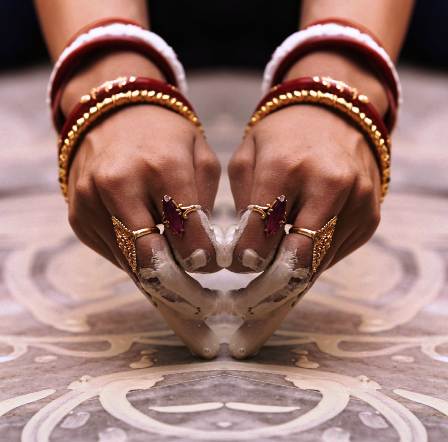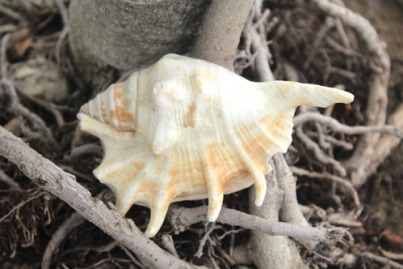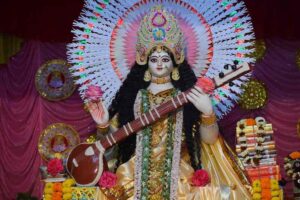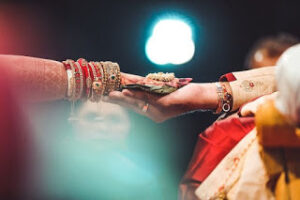Shakha Pola, the bangle pair adorned by married women, forms an integral part of the Bengali wedding trousseau.
Shakha, the white bangle is crafted & polished out of the conch shell, and Pola is a red coral bangle. Shakha & Pola, are an integral symbol of a married woman and holds great significance in Bengali culture. Married women wear a pair of each in both hands.
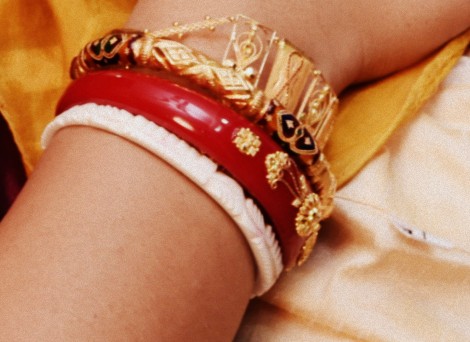 |
| Shakha Pola |
Bengali Tradition – Dodhi Mongol
On the morning of the wedding day, a ritual called Dodhi Mongol is performed. Seven married women soak the bangles made with conch shells in turmeric mixed water. Then the Bengali bride is adorned with shell and coral bangles. The mother of the bride gift this to her.
Next, she consumes a meal of curd, after which the bride and her parents fast for the day till the wedding ceremony is over. This custom is popular in the eastern part of India.
Also Read: Why Mother Can’t Watch His Son’s Wedding
Significance Of Shakha Pola
Shakha is brittle and needs to be handled with care.
Shakha, being white, vows purity, and red coral symbolizes fertility and happiness. Few women believe that Shakha Pola is a symbolism of their love for her husband and the belief in the institution of marriage.
Shakha Pola Folklores
Shakha and Pola bangles have been a part of Bengali tradition and custom for centuries. According to the folk stories, these Shakha Pola custom belongs to the poor fishermen.
There used to be lots of conch shells and corals by the sea. As they can’t afford expensive jewelry, they powdered these and made bangles out of it. These were their substitution for ivory ornaments.
Iron Bangle(Loha Bandhano) For Daughter-in-law
The mother-in-law gifts her daughter-in-law an iron bangle, Loha, when she comes into her new household. The iron bangle provides infirmity to the relation and helps to balance the positive and negative power. It is worn only in the left hand, and many covered it by gold.
How Shakha Is Prepared
From a conch shell, two pairs of Shakha come out. Then polishing is done. In the last part, artisans make an intricate design on the Shakha.
These days, Shakha is expensive, so people also get it done with plastic materials. The easiest way to find the difference is that Shakhas made from conch-shell are never round in shape.
Historical Legacy Of Shakha
Earlier, Dhaka, the capital of Bangladesh, was the main center of the conch cutting industry. In the 17th century, The Shankhari people, who craft Shakha out of conch shells, were reportedly brought to Dhaka by the Mughal emperor, who allotted them an area for settlement. The place later became known as Shankhari Bazaar.
During the war between Pakistan and Bangladesh in 1971, a massacre carried out by the Pakistan Army reduced the population of Shankharis in Dhaka.
These days artisans are living in poor conditions. High import duty on the raw materials has declined the industry in Dhaka. They do not have advanced types of machinery to create designer Shakha.
Conch makers have passed the craft on from generation to generation for the past 300 years do not want their next generation to be a part of this.
Now, the main center of the industry is in Kolkata, India.
Interesting Facts About Shakha
Many customs related to Shakha is prevalent in Bengali society. There shall be no negotiation on the price of Shakha. The wife should not take money from her husband to buy Shakha. The husband also must not accompany her for the purchase. Some women ask the shopkeeper or Shankhari to help them wear the bangles and later touch their feet to seek blessing.
Even though times have changed. But, still, there is an amalgamation of tradition and modernity is alive in the lives of Hindu Bengali women.
